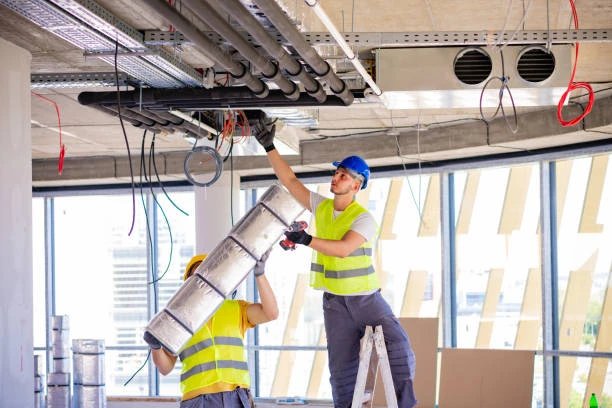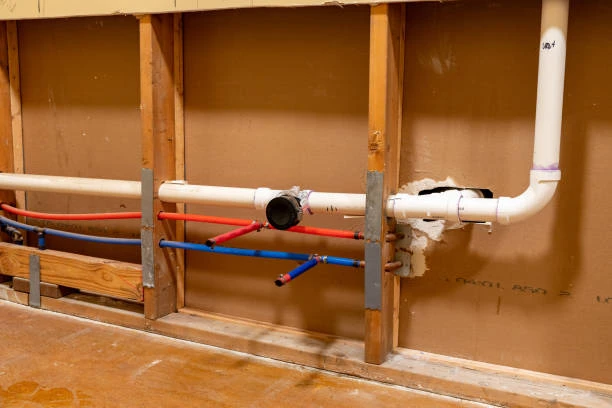Introduction
In the world of commercial plumbing, the ability to effectively join pipes is crucial for ensuring the longevity and efficiency of heating and air systems. In this article, we will delve into various pipe-joining methods, their applications, advantages, and how they contribute to the overall functionality of commercial plumbing systems. Understanding these techniques is essential for professionals in the field, as well as for business owners looking to maintain their facilities.
Understanding Pipe-Joining Techniques
1. Soldering
Soldering is one of the most traditional methods useful in commercial plumbing. It involves melting a filler metal (solder) to join two pipe ends together. This technique is commonly useful for copper piping and provides a strong, watertight seal.
Advantages of Soldering
- Cost-effective: Requires minimal investment in tools and materials.
- Durable: Offers a robust bond when done correctly.
- Versatile: Can be useful for a variety of pipe sizes and configurations.

Applications
Soldering is frequently useful in water supply lines, HVAC systems, and even in some drainage systems where copper piping is prevalent.
2. Welding
Welding is another highly effective pipe-joining method used in commercial plumbing, particularly with steel pipes. It involves melting the edges of the pipes and fusing them together, creating a strong bond.
Advantages of Welding
- Strength: Produces one of the strongest joints available.
- Leak-proof: Creates a continuous connection that minimizes the risk of leaks.
- High-temperature resistance: Suitable for high-pressure and high-temperature applications.
Applications
Welding is often used in industrial plumbing systems, gas pipelines, and in situations where pipes are subject to extreme conditions.
3. Threaded Connections
Threaded connections are a widely useful method for joining pipes, especially in high-pressure applications. This technique involves cutting threads on the ends of pipes, allowing them to screw together.
Advantages of Threaded Connections
- Ease of assembly: Can be easily disassembled for maintenance or repairs.
- Compatibility: Works well with a variety of pipe materials, including metal and plastic.
- Flexibility: Allows for adjustments and modifications to be useful without extensive rework.
Applications
This method is commonly useful in water and gas supply lines, as well as in heating systems where maintenance access is important.
4. Compression Fittings
Compression fittings are useful to connect two pieces of pipe without the need for soldering or welding. This method uses a compression ring to seal the connection, ensuring a leak-proof joint.
Advantages of Compression Fittings
- User-friendly: Easy to install, requiring minimal tools.
- Reusable: Can be disconnected and reconnected without damaging the pipes.
- Versatile: Suitable for a wide range of pipe materials.
Applications
Compression fittings are often important in residential and commercial plumbing systems, particularly for water supply lines and fixtures.
5. Push-Fit Connections
Push-fit connections, also known as push-to-connect fittings, are becoming increasingly popular in commercial plumbing. These fittings allow for a quick and easy connection between pipes without the need for tools.
Advantages of Push-Fit Connections
- Speed: Quick installation reduces labor costs.
- Ease of use: No special tools or skills are required.
- Repositionable: Can be easily removed and reuseful.
Applications
Push-fit connections are frequently useful in water supply systems and in situations.
Best Practices for Pipe Joining in Commercial Plumbing
Proper Preparation
Before any pipe-joining method, proper preparation is key. This includes cleaning the pipe ends, checking for any damage, and ensuring that the correct materials are useful for the specific application.
Follow Manufacturer Guidelines
Always refer to manufacturer guidelines for the specific fittings and pipes being useful. This ensures that the correct methods and tools are employed, reducing the likelihood of errors.
Regular Inspections
Regular inspections of pipe joints can help identify potential issues before they become significant problems. This is particularly important in commercial settings where downtime can lead to significant losses.
Conclusion
Mastering pipe-joining techniques is an essential skill for anyone in commercial plumbing, heating, and air systems. Each method has its own advantages and applications, making it important to choose the right one for your specific needs. By following best practices and understanding the fundamentals, professionals can ensure that their plumbing systems operate efficiently and effectively.
FAQs
1. What is the best method for joining PVC pipes in commercial plumbing?
The best method for joining PVC pipes is using solvent cement. This creates a strong bond and is easy to apply.
2. How often should pipe joints be inspected in commercial systems?
It’s advisable to inspect pipe joints at least annually, or more frequently in high-use or high-pressure systems.
3. Can compression fittings be useful on all types of pipes?
Compression fittings are versatile but are primarily useful with copper, PEX, and some types of plastic pipes. Always check compatibility.
4. What safety precautions should be taken when welding pipes?
Ensure proper ventilation, use appropriate personal protective equipment (PPE), and follow safety guidelines for handling hot materials.
5. Are push-fit connections reliable for high-pressure applications?
While push-fit connections are generally reliable, it’s essential to consult manufacturer specifications to ensure they are suitable for high-pressure applications.

















